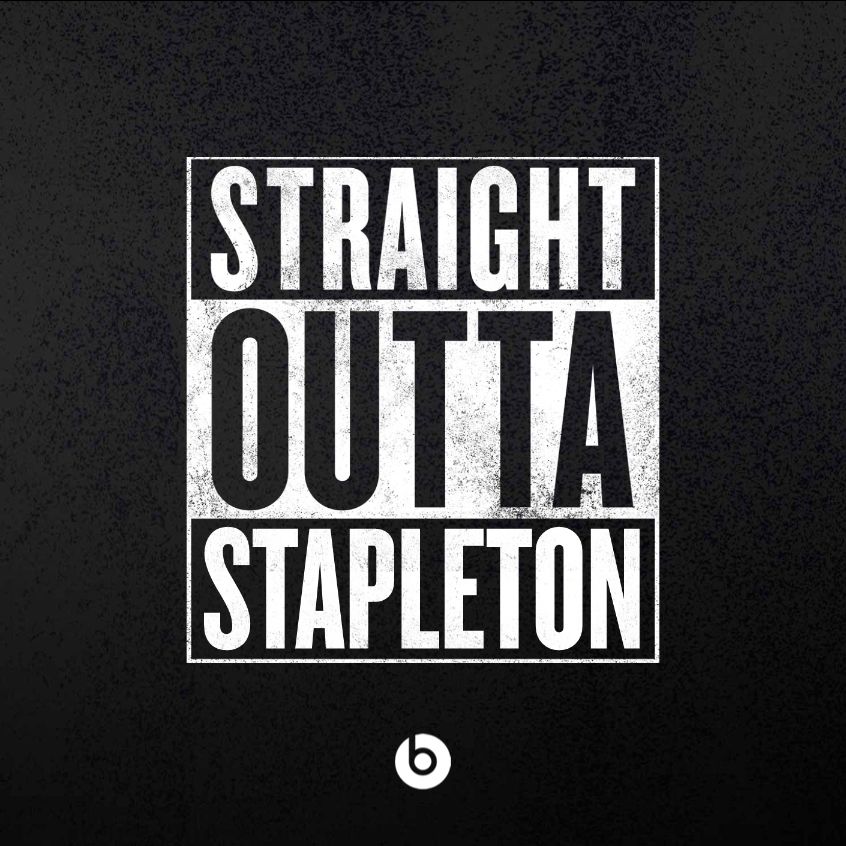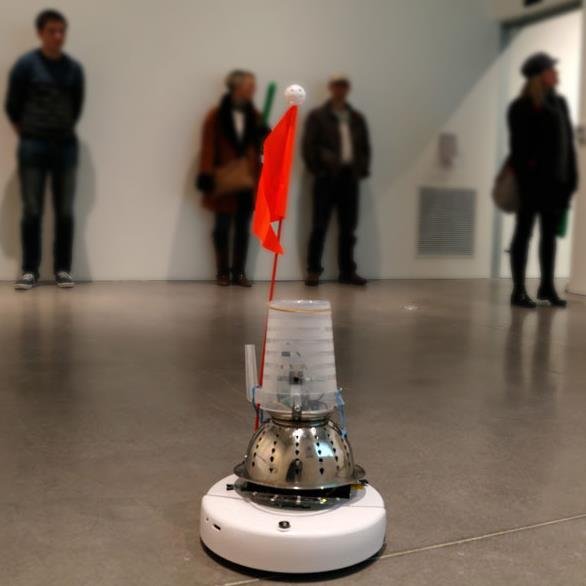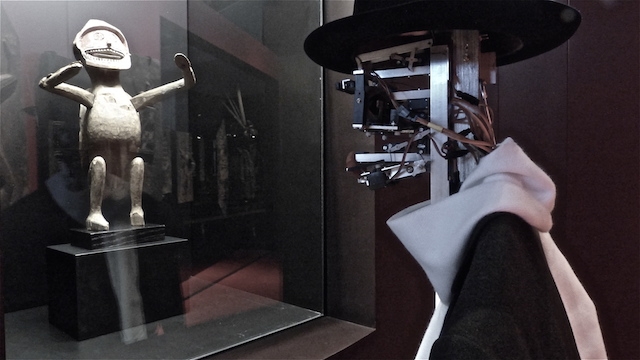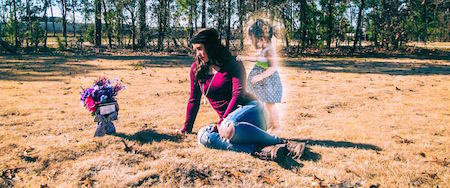Spring has definitely sprung here. The daffodils are up, the forsythia blooms, the raspberries and blackberries have begun to leaf, and the birds and sun are usually out. Still chilly at night, and we have some strong cold winds blowing through, so I haven’t put my down jacket away. But we expect that to calm down soon.
In recent days I’ve walked Billie the Bengal in the garden wearing just my hoodie for warmth. Predictions have us heading into a normal spring, at which point the anticipated arrival of Zika-bearing skeeters will force us to cover up and slather with CVS Soft Skin Spray, the bargain alternative to Avon’s Skin So Soft, the accidental mosquito repellent.
Ain’t Science Wonderful?
Stop the presses! Hold your breath! Turns out that people fluent in written Arabic are much better at distinguishing between Arabic characters (and their typographic and orthographic variants) than people who don’t know Arabic. Amazing!
And, drawing on experiments demonstrating that astonishing phenomenon, researchers at Johns Hopkins University conclude that “People who are experts in things can see differences in them that most laypeople can’t.” That’s the lead in Ana Swanson’s March 29 Wonkblog column for the Washington Post, “Being an expert literally changes how you see things.” Swanson goes on: “The study finds evidence that the way we process information visually is influenced by our knowledge and experience.” Needless to say, this challenges the widespread belief that our knowledge and experience have little or no influence on the way we process information visually.
 Which means that at last we have proof — scientific proof! — that people who recognize and understand what they’re looking at have a more accurate and informed response thereto than people who don’t know shit from Shinola about it. As Brenda Rapp, a professor in the university’s Department of Cognitive Sciences and senior author of the paper announcing these findings puts it, “What you know affects how you see things.” (Click here for a downloadable PDF of the full article, “The Effects of Alphabet and Expertise on Letter Perception,” by Robert W. Wiley, Colin Wilson, and Rapp, Journal of Experimental Psychology: Human Perception and Performance, February 25 , 2016.)
Which means that at last we have proof — scientific proof! — that people who recognize and understand what they’re looking at have a more accurate and informed response thereto than people who don’t know shit from Shinola about it. As Brenda Rapp, a professor in the university’s Department of Cognitive Sciences and senior author of the paper announcing these findings puts it, “What you know affects how you see things.” (Click here for a downloadable PDF of the full article, “The Effects of Alphabet and Expertise on Letter Perception,” by Robert W. Wiley, Colin Wilson, and Rapp, Journal of Experimental Psychology: Human Perception and Performance, February 25 , 2016.)
It’s certainly a relief to me, and perhaps to you as well, to have this concept move from the merely folkloric, anecdotal, and “common-sensical” to the seemingly quantifiable and scientistic. (Charts! Diagrams! Statistics!) It explains why your doctor can scrutinize your x-rays and glean data that’s lost on you, and how your mechanic can simply look at your car’s innards and diagnose its problems — skills hitherto considered mysterious, bordering on the magical.
It even provides evidence to support my conviction — considered arrogant and wrongheaded by some — that critics can actually serve a useful purpose by bringing experience, knowledge, and information to bear on the art they discuss. So I’m pleased to have some of my working assumptions validated in this manner. This JHU team’s pioneering work was supported by National Institutes of Health grant DC012283, and I for one consider it money well spent; they have certainly put our tax dollars to good use. Indeed, I have nominated their accomplishment for an Ig Nobel Prize.
Berenson. Bernard Berenson.
First came kulturBot 3.0, “a robotic art show reviewer and poet that attends exhibitions and tweets text-captioned photos of the artworks and venue.” In other words, a replacement for me, about which I wrote in summer 2015. Now comes Berenson, a robot that “works by recording art goers’ reactions to pieces of art, and then using the data it collects to create its own artistic preferences.”
In “This Dapper Robot Is an Art Critic,” a February 25, 2016 story at The Creators Project, D. J. Pangburn elaborates:
“Berenson was conceived and designed by anthropologist Denis Vidal and robotics engineer Philippe Gaussier. Through a camera in its right eye, it records people’s reactions to artworks. These recordings are networked with a computer in a wall behind the exhibition space. Positive reactions are represented as green circles, while negative ones are represented as red circles. Berenson either smiles or frowns depending on the frequency of either green or red circles. This neural network simulator is the foundation upon which Berenson builds its own tastes.”
In other words, Berenson bases its opinions entirely on other people’s opinions. That doesn’t make it a critic, in any sense of the word, but does make it an extremely accurate simulacrum of the average “art goer,” and a reasonable facsimile of the average “cultural journalist” for whom visual art forms part of the culture beat. (It takes its name, along with its bowler hat and black overcoat, from famous American art historian Bernard Berenson.)
Robert Louis Stevenson, of all people, predicted this. In Virginibus Puerisque (1881), Stevenson noted that “Enthusiasm about art is become a function of the average female being, which she performs with precision and a sort of haunting sprightliness, like an ingenious and well-regulated machine.” But the attitude that, even half a century ago, Tom Wolfe ascribed primarily to the young college-educated women he dubbed “culture buds,” has since gone cross-gender and gender persuasion. Small wonder, then, that in the emerging android era we won’t need the “culture buds” to perform this task; there’s an automaton for that — an ingenious and well-regulated machine indeed.
A number of commentators have drawn exactly the wrong conclusion from this experiment, For example, in her ArtNet article, “Researchers created a robot that is capable of forming its own opinion about art,” Danielle Muoio reports incorrectly that “the robot is capable of judging whether it likes a piece of art and shaping its artistic preferences. … seeing a robot that can exhibit a certain amount of emotional and aesthetic preference isn’t commonplace.”
 She writes, a few sentences on, that “Berenson works by recording art goers’ reactions to pieces of art, and then using the data it collects to create its own artistic preferences.” Around these parts we call that following the herd; it strikes me as little more than an extension of the computer program Eliza, the Rogerian Therapist, which merely mirrored your own thoughts. But this does not deter Muoio from equating the act of polling others and voting with the majority as equivalent to “forming [one’s] own opinion about art,” “judging,” “shaping [one’s] artistic preferences,” and “exhibit[ing] a certain amount of emotional and aesthetic preference.”
She writes, a few sentences on, that “Berenson works by recording art goers’ reactions to pieces of art, and then using the data it collects to create its own artistic preferences.” Around these parts we call that following the herd; it strikes me as little more than an extension of the computer program Eliza, the Rogerian Therapist, which merely mirrored your own thoughts. But this does not deter Muoio from equating the act of polling others and voting with the majority as equivalent to “forming [one’s] own opinion about art,” “judging,” “shaping [one’s] artistic preferences,” and “exhibit[ing] a certain amount of emotional and aesthetic preference.”
Such uninformed nonsense — which, in terms of the quality of its content, seems indistinguishable from whatever Berenson’s algorithms generate — is what you get when you hire a culture bud like Muoio to produce cultural journalism. Don’t say Robert Louis Stevenson didn’t warn you.
The Mouths of Babes
Youngest culture bud ever? Future Edvard Munch biographer? Or both? In any case, keep your eye on Alice Choina of Queens, just 3-1/2 years old, who, at the tender age of two, inexplicably fell in love with Munch’s “The Scream,” currently on display at New York’s Neue Galerie. Watch and listen as a frustrated but articulate Alice voices her displeasure at the Neue Galerie’s “No Children” Policy, which prohibits her from experiencing the original work. (The policy has nothing to do with any “parental discretion” advisory relating to “The Scream” or Munch’s work in general; it applies across the board to all Neue Galerie shows.)
Having already exhibited “a certain amount of emotional and aesthetic preference,” Ms. Choina has a much better chance of forming her own opinion about art that any ditto-head bot merely echoing the taste patterns of others. So I say, you go, girl; art-kids rule. Rev up that critical thinking. Many her age have to get dragged to art museums and galleries; when we find those who really wants to go we should, at the very least, make exceptions to such regulations. (Perhaps the producers of Steve Harvey’s new show, Little Big Shots, can provide Ms. Choina with another platform from which to make her case.)
Munch was Norwegian. By curious coincidence, last December I pointed out a video in which “Angelina,” a 7-year-old Norwegian girl, flawlessly channels Billie Holiday in a note-perfect rendition of “Gloomy Sunday” (a/k/a the “Hungarian Suicide Song.”) Does the Norwegian soul harbor some deep depression that has a particular appeal to children?
Forward to the Past
The story, datelined March 30, starts off sufficiently weird and sad:
“Spring Lake [North Carolina] resident Jeanie Ditty, 23, and her live-in boyfriend, Zachary Keefer, 32, were arrested and charged last week with first-degree murder and negligent child abuse inflicting serious bodily injury in the December death of Ditty’s daughter, Macy Grace, the Fayetteville Police Department said.”
Apparently one or the other of the suspects — or both of them together — beat this child so badly on or around December 1 that she required life support and died on December 4. How and why immediate arrests did not follow remains unspecified; the coroner did not rule this a homicide until March 23.
Meanwhile, on the one-month anniversary of Macy’s demise her mother responded to an offer from Pennsylvania-based photographer Sunny Jo of a free set of photographs of herself “with” Macy. Jo had read Ditty’s Facebook posts about what she presented via social media as her tragic loss, and had volunteered to produce a set of what he calls “his ‘One More Time’ package, in which a transparent image of a deceased loved one is superimposed onto a photo to make them look like an angel, to Ditty for free. The package usually runs between $300 and $500, he said.”
Now it gets truly macabre. Ditty had Keefer take pictures of her at Macy’s gravesite, a bucolic setting, and supplied those to Sunny Jo, along with images of Macy alive. Sunny Jo generated a cluster of photomontages from these: Ditty reading to her daughter, walking with her hand in hand, Macy placing her hand on Mommy’s shoulder as Ditty sits on the grass by the grave. They have the same mixed creepiness and mawkish sentimentality of a certain type of Victorian memento mori cabinet cards from which they derive. (Those often used the same photomontage process to incorporate the deceased into the image, though they did so by analog means, whereas Sunny Jo surely went the Photoshop route.)
Mr. Jo “then spent two to three weeks creating the ‘after life’ images,” he claims, though I suspect he did some other things as well during that period. Be that as it may, he had no knowledge of the investigation that eventually led to their arrest, so he’s understandably upset at having played an unwitting part in Ditty’s and Keefer’s charade, “and in hindsight, calls working with Ditty the ‘biggest mistake’ of his career.” (According to his website, that career spans “over eight years of visual entertainment experience.” And it shows.)
Unfortunately, he then went on to add evidence of surpassing dumbness: “‘The only good part about this is that baby has a voice now,’ he said. ‘We gave Macy Grace a voice.'” (See Julia Jacobo’s ABCnews report, “Mother Charged in 2-Year-Old’s Death Commissioned ‘After Life’ Photos.”) Who Mr. Jo numbers among that “we” I can’t imagine. But, even if unintentionally, these scenarios cannot pretend to articulate whatever Macy Grace might have to say about her short life and its abrupt, horrific end.
•
This post supported in part by a donation from photographer George Malave.
•
 Special offer: If you want me to either continue pursuing a particular subject or give you a break and (for one post) write on a topic — my choice — other than the current main story, make a donation of $50 via the PayPal widget below, indicating your preference in a note accompanying your donation. I’ll credit you as that new post’s sponsor, and link to a website of your choosing. Include a note with your snail-mail address (or email it to me separately) for a free signed copy of my 1995 book Critical Focus!
Special offer: If you want me to either continue pursuing a particular subject or give you a break and (for one post) write on a topic — my choice — other than the current main story, make a donation of $50 via the PayPal widget below, indicating your preference in a note accompanying your donation. I’ll credit you as that new post’s sponsor, and link to a website of your choosing. Include a note with your snail-mail address (or email it to me separately) for a free signed copy of my 1995 book Critical Focus!
















Just when you think humans can’t sink any lower.